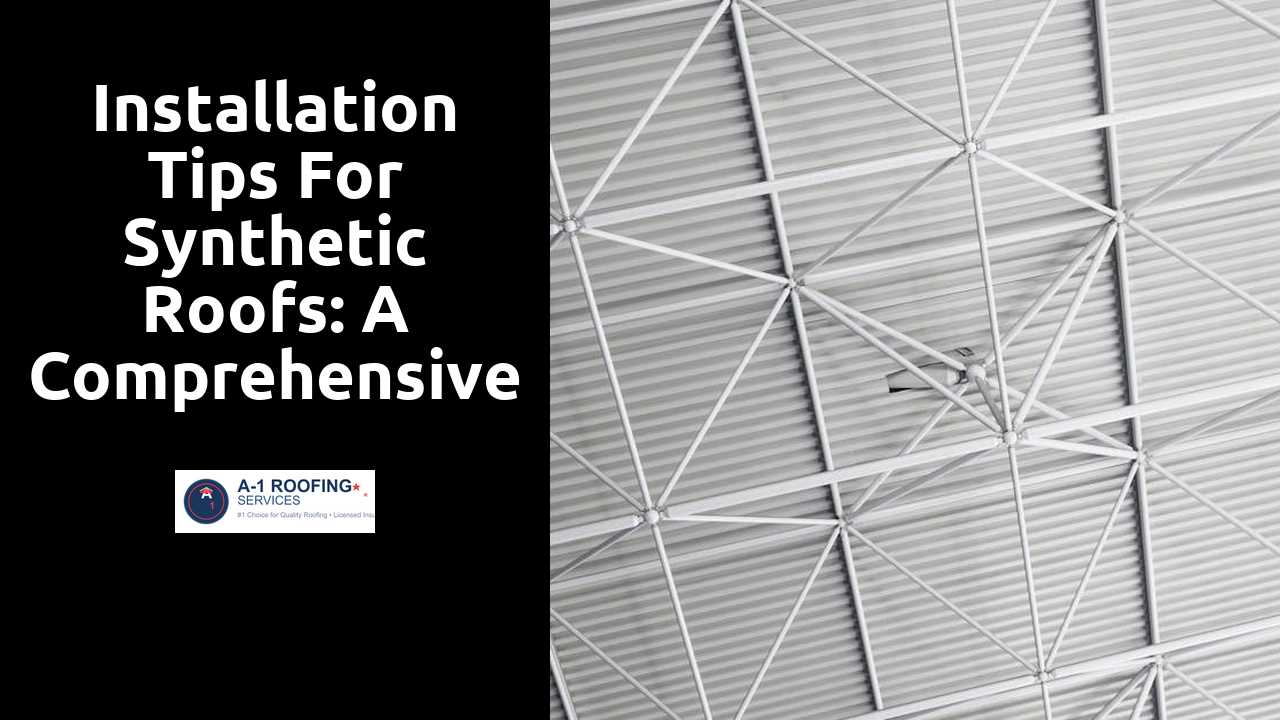
Installation Tips for Synthetic Roofs: A Comprehensive Guide
Table Of Contents
Installing Underlayment
The underlayment acts as a critical barrier between the structural deck and the roofing material. It serves to provide additional protection against moisture infiltration and temperature fluctuations. Proper selection of underlayment material is essential for maximizing performance. Various options are available, including felt paper, synthetic sheets, and peel-and-stick membranes, each offering unique benefits based on climate and installation type.
When applying underlayment, start with a clean and dry surface. Lay the underlayment in horizontal rows, ensuring that each subsequent row overlaps the previous one to direct water flow outward. Fastening should be completed according to the manufacturer's specifications, usually involving staples or roofing nails, depending on the selected material. Adequate attention to seams and overlaps will enhance the durability of the roof system. Properly installed underlayment creates a reliable foundation for the synthetic roof panels that will follow.
This new blog post covers this topic in more detail.
Steps for Proper Underlayment Application
Before applying underlayment, it’s essential to inspect the roof deck for any damage or debris that could compromise the installation. Cleanup is crucial to ensure a smooth surface. Once the area is prepared, roll out the underlayment beginning from the eave, allowing it to hang slightly over the edge. This technique provides an additional layer of protection against moisture intrusion. As each section is unrolled, use roofing nails or staples to secure the underlayment to the deck. It's important to follow the manufacturer's recommendations regarding fastener placement and spacing for optimal performance.
Overlap adjacent sheets of underlayment by at least six inches. This overlap not only prevents water penetration but also reinforces the barrier against wind-driven rain. When reaching the ridge, trim the underlayment so that it fits snugly and does not create unnecessary folds or air pockets. After finishing this step, inspect the entire surface to ensure that there are no gaps, tears, or areas that could lead to vulnerabilities. Proper attention at this stage lays the foundation for a more durable and effective synthetic roof installation.
Securing Synthetic Roof Panels
When securing synthetic roof panels, proper alignment and fitting are essential to ensure maximum durability and effectiveness. Start by positioning the panels according to the manufacturer's layout guidelines, maintaining consistent overlaps and margins. This can help prevent potential leaks and facilitate easier installation. Once in place, use screws or fasteners recommended for synthetic materials. Be sure to insert them at the intervals suggested, as under- or over-fastening can compromise the roof’s integrity and performance.
In addition to fastening, it’s important to check for proper clearance and ventilation around the edges. Adequate airflow can prevent moisture buildup, which may lead to deterioration over time. Consider applying a suitable sealant around the fasteners and seams, sealing potential entry points for water. Regular inspection of the installed panels will help identify any loose or damaged sections that need immediate attention. Taking these precautionary measures can enhance the longevity and reliability of synthetic roofing systems.
Best Practices for Panel Installation
When installing synthetic roof panels, ensuring that they are properly aligned is crucial for both aesthetics and functionality. Begin by measuring carefully and marking guidelines on the roof deck to help maintain an even placement throughout the installation process. It is advisable to start from the bottom edge and work your way up, overlapping panels as needed to prevent water infiltration. Using a chalk line can help achieve straight lines, reducing the risk of misalignment.
Proper nailing techniques play an essential role in securing panels. Use corrosion-resistant fasteners specifically designed for synthetic roofing materials. They should be driven flush with the panel surface without overdriving, as this might compromise the integrity of the panel. Spacing fasteners appropriately according to manufacturer specifications is also vital, as it provides the necessary holding power and accommodates thermal expansion. Double-checking each installation step will lead to a more durable and effective roofing system.
Sealing and Waterproofing
Effective sealing is essential for ensuring that synthetic roofs perform well over time. Depending on the specific type of roofing material used, select the right sealant that offers compatibility and durability. Carefully examine the seams and joints where different panels meet. These areas are most vulnerable to leaks and should be treated with additional sealant to create a watertight barrier. Following the manufacturer's guidelines for application will also enhance the integrity of the seal.
Waterproofing goes hand in hand with sealing, as it provides an added layer of protection against moisture infiltration. Before applying waterproofing solutions, ensure that the surface is clean and free from debris. Consider using a membrane if the design of the roof allows for it, as these can significantly boost waterproofing effects. Regular maintenance checks are vital, as they help identify any areas that may require resealing or additional waterproofing later on.
Techniques for Effective Sealing
Achieving a watertight seal is essential for the longevity and performance of synthetic roofs. Start by selecting a high-quality sealant specifically designed for roofing applications. Apply the sealant generously to all joints, seams, and penetrations. Ensure the surfaces are clean and dry before application. Press the sealant into the gaps firmly, using a caulking gun for precision. This technique minimizes the risk of water infiltration and enhances the overall integrity of the roofing system.
In addition to using the right sealant, consider the environmental conditions during installation. Extreme temperatures can affect the curing process, leading to potential failures. For optimal results, perform sealing tasks during moderate weather conditions. Monitor the weather forecast and avoid sealing right before a rainfall or snow event. Allow adequate curing time based on the manufacturer’s recommendations before exposing the roof to water. This practice will help ensure a durable and reliable seal for years to come.
Related Links
Comparing Synthetic Roofing Materials to Traditional OptionsAdvantages of Using Synthetic Roofing for Modern Homes